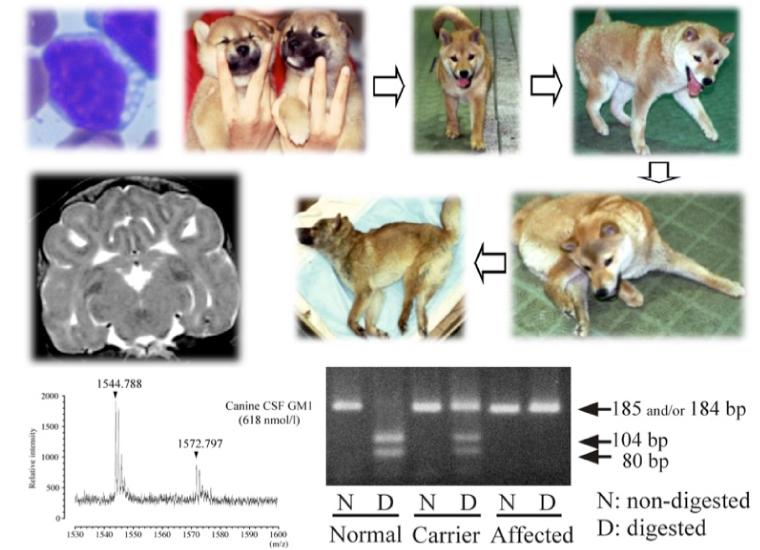Genetic Testing
Genetic disorders are one part of the totality of disease. A disease may develop when patients who already have an abnormality—congenital defect—or variation— polymorphism—in their DNA are exposed to any one of a range of environmental factors, and the resultant condition may vary in severity from patient to patient. This may seem a complicated idea but let us provide an explanation as follows. Of course, many genetic diseases arise solely due to genetic abnormalities (mutations). One such example is the fatal inherited disorder GM1 gangliosidosis in Shiba dogs (see Figure 1 below). It causes progressive neurologic dysfunction due to a homozygous (c.1647delC) in the beta-galactosidase gene (GLB1). The disease can thus be definitively diagnosed in genetic testing, and the prognosis of the patient clearly explained. Conversely, in other cases, interpreting the results of genetic testing proves highly problematic. It is common to establish that an animal has a certain disease-associated homozygous mutation, without being certain whether it has reached the point of symptomatic manifestation. Accordingly, the results of genetic testing do not allow diagnoses to be established or excluded for all genetic disorders. Interpreting the results of genetic testing requires specialized knowledge of animal genetic disorders. Interpretations and judgments made on the basis of such specialized knowledge allow diagnoses to be made, and preventative measures taken for the future breeding population.
Recent advances in genetic testing technology allow rapid genotyping—determination of a causal mutation—for a disease association with a small amount of blood or saliva. At KUVTH, we perform a wide variety of testing for genetic disorders and diseases, and offer expert interpretation of the results in a pertinent medical consultation.

Figure 1


